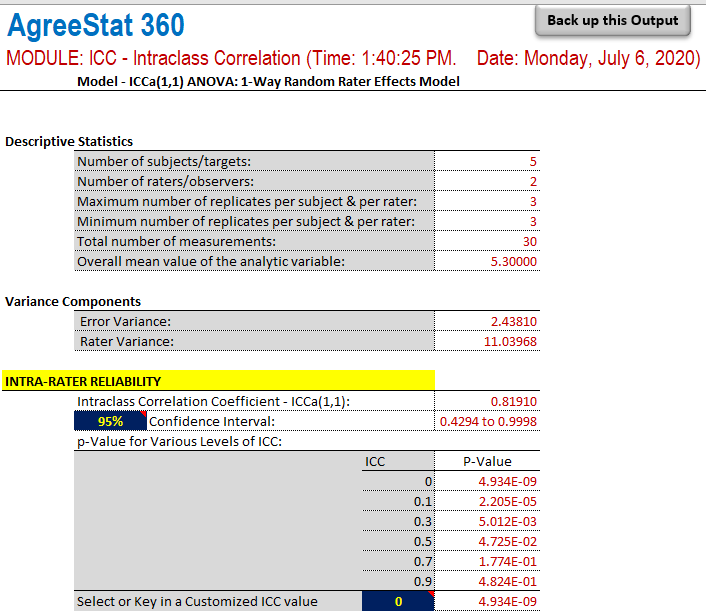Intraclass Correlation/1-Way Random Rater Effects Model
Input Data
The dataset shown below is included in one of the example worksheets of AgreeStat 360 and can therefore be downloaded from the program (This video shows how you may import your own data into AgreeStat360). It contains the ratings that 2 judges J1 and J2 assigned to 5 subjects (or targets).
The objective is to use AgreeStat360 to compute the intraclass correlation coefficient and associated precision measures under the 1-way random rater effects model.

Analysis with AgreeStat/360
To see how AgreeStat360 processes this dataset to produce the intraclass correlation coefficient and associated precision measures, please play the video below. This video can also be watched on youtube.com for more clarity if needed.
Results
The output that AgreeStat360 produces is shown below and has 3 parts. The basic descriptive statistics constitute the first part. The second part shows the variance components while the third part shows the intra-rater reliability estimate along with its precision measures. No inter-rater reliability can be calculated under the current model.
-
Descriptive statistics: The first part of this output displays basic statistics about the number of non-missing observations as well as their mean values or number subjects.
-
Variance components: This section will typically show the error and rater variances. These variance components are used for calculating the inter-rater reliability coefficient, and could help explain its magnitude.
-
Intra-rater reliability: This part shows the intra-rater reliability coefficient, its confidence intervals and associated p-values. If needed, you can modify both the confidence level and the ICC null value to update the corresponding confidence intervals and p-values. This can be accomplished by clicking one of the blue cells to display the dropdown list from which alternative values can be selected.

